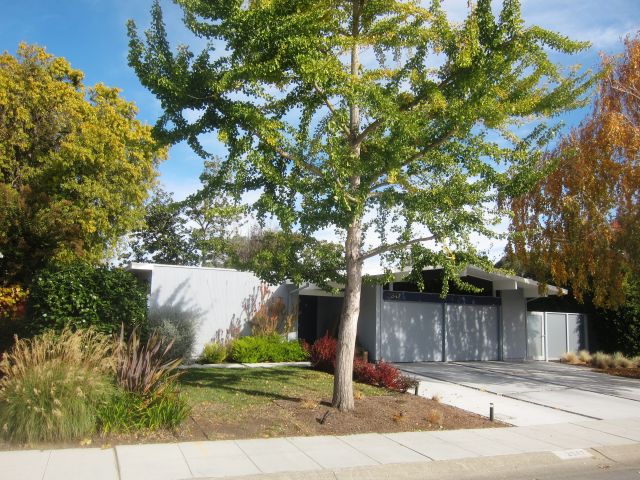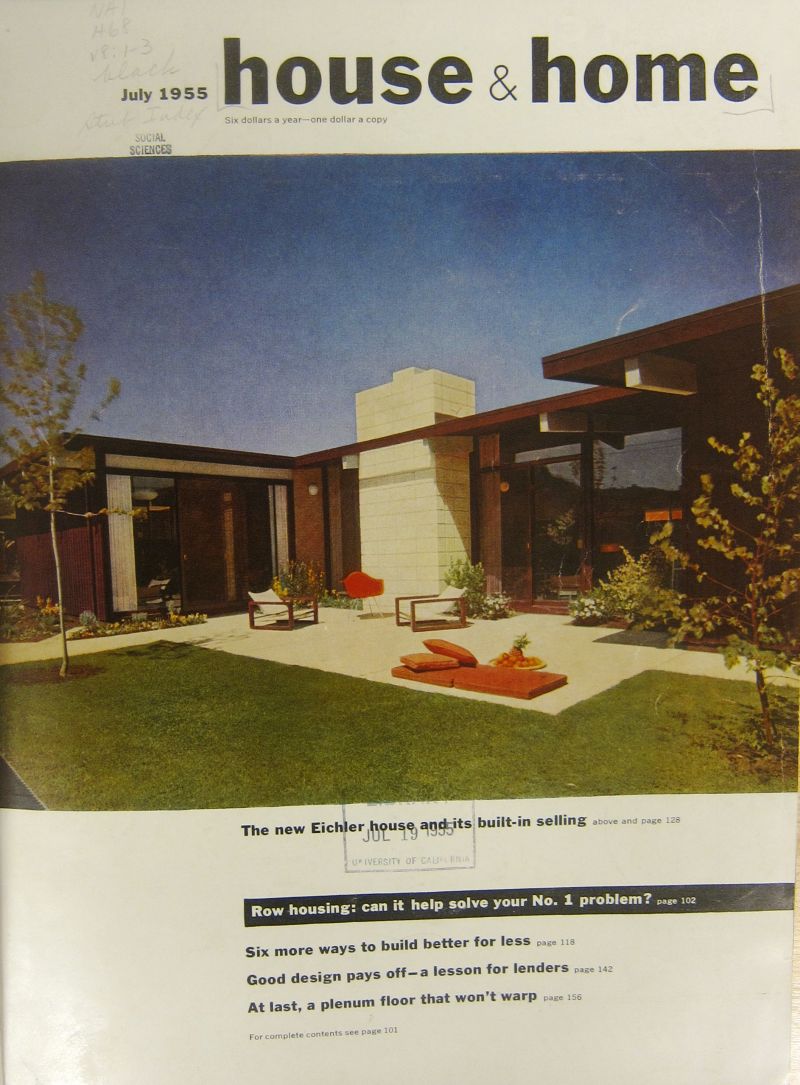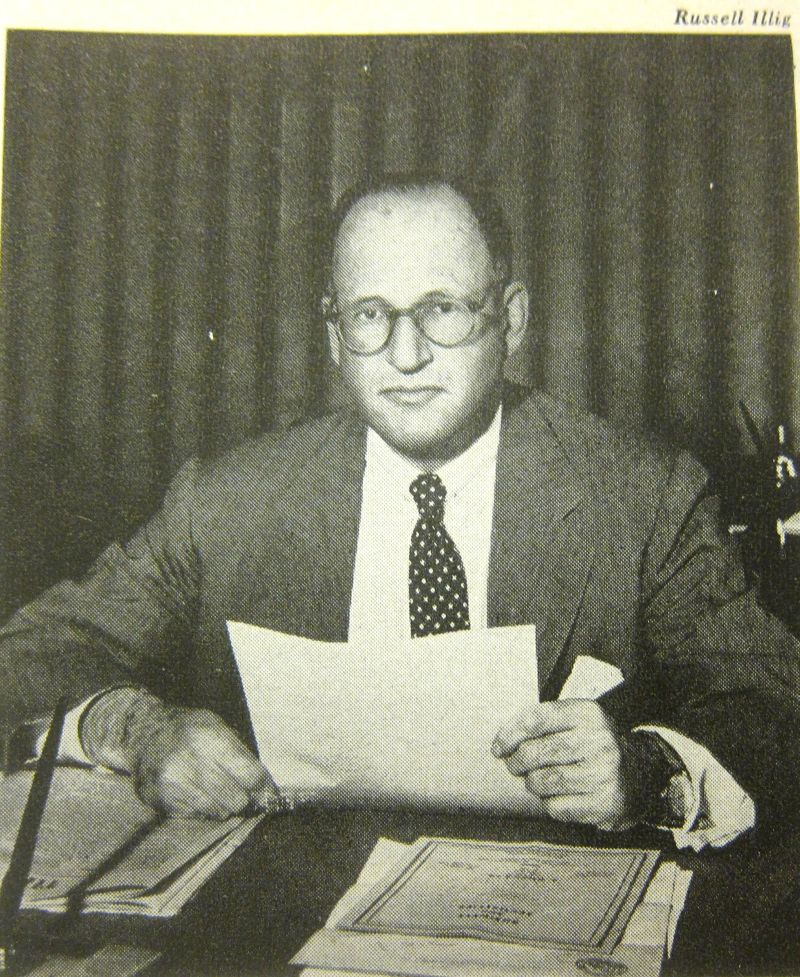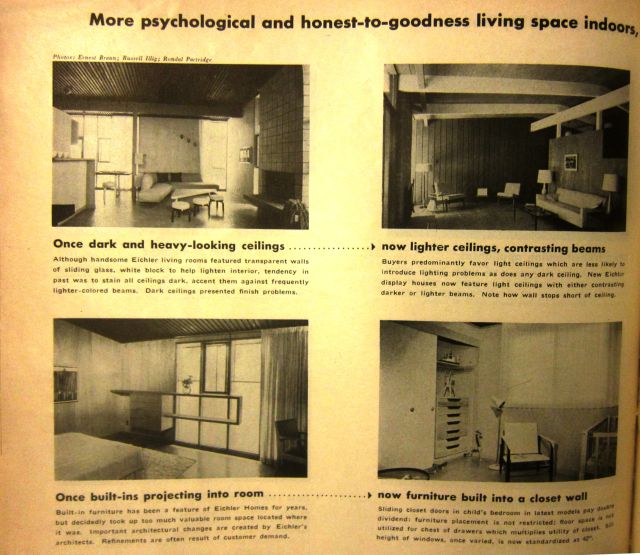
Eichler: Better Ways to Sell Better Houses
 |
|
|
Looking to take a trip back in time? A time machine would be nice, but an easier way is to visit your favorite library – especially if it has a strong stock of architectural and builders’ journals.
In 1955, when Eichler Homes was still young, the building professionals journal House & Home devoted all of eight pages to Joe Eichler, in an article that held Joe up as a model builder who paid as much attention to quality building as he did to quality marketing of his homes.
It’s revealing to read, because it focuses not on the aesthetic style of the homes, which makes them so loved today, as on their utility – and on Eichler’s constant search for ways to build a better, more utilitarian design.
The article also shows that by 1955, Eichler was moving up market.
“Eichler gets home buyers to put down more cash for his 800 houses a year (around $3,000) than any other U.S. builder but Levitt,” the unnamed author wrote. “He has created in a big way the quality house market that offers home builders their big new opportunity to increase sales despite the end of the shelter shortage.”
 |
|
|
“Eight years ago Eichler was a butter-and-egg man,” the article continued. “He started building with just one idea – that all other home builders must be crazy not to recognize the tremendous sales opportunity modern architects were opening up for them by designing better living into houses and the sales appeal of houses where buyers could live the way they really want to live today.”
The article, which features a home designed by Jones & Emmons and landscaped by Thomas Church, describes how many times Eichler has architects work on different aspects of the homes, using feedback from buyers to produce a product that appeals and that functions for a modern family.
“That’s why he has his architects design and redesign hundreds of changes each year, paying all their drafting costs ... all their expenses and a per diem for the principals plus $75 royalty per house sold.”
The home in the article is a three-bedroom home, no atrium, with a living room and kitchen, no family room, but an 'all purpose room' tucked behind the living room.
“The 1955 model shown here is by far the best Eichler house to date. With it he has quit the lower middle price range for the $16,000 to $22,000 bracket ‘where people are more interested in better living than in terms.’ ”
That last quote is unattributed, but it is certainly from Joe Eichler.
Because of this work, House & Home says, “He has won more prizes and has been more widely publicized than any other builder in the country.”
 |
|
|
The article charts some functional changes in Eichler homes over the years. It notes that “over-sized carports” in earlier homes have been replaced by “a double, over-sized garage.”
And, although Eichlers are known for their openness (and some owners today do all they can to make them even more open), House & Home focuses on ways the new Eichlers provided a greater sense of enclosure – and privacy – than earlier models.
“The first all-purpose room was open, little more than an extension of the living room,” the magazine wrote, in its typical clipped style, “but did not meet problem of separating such activities as reading and watching TV, entertaining guests and allowing children to play.”
“Now a room that can be closed off,” the magazine goes on, showing the “family room off living room,” with two variants. “Off-kitchen location makes it more a children’s room; off-living room makes it more adult space.”
The article also focused on Eichler’s desire to please housewives with compact, usable kitchens “open to dining area,” and his move from standalone to built-in appliances.
Also winning praise from House & Home was Eichler’s shift from “dark and heavy looking ceilings” in earlier models to “lighter ceilings, contrasting beams.”
 |
|
|
Always looking to conserve living space and make rooms easier to use, the magazine noted, Eichler replaced bedroom closet doors that swung outwards with “sliding closets in the corridor.”
And of course the magazine made much of the way Eichler homes opened to the out of doors and turned outside areas into usable living space.
The magazine concluded by suggesting that its builder readers consider following Joe’s lead, both in making homes and selling them. It notes, for example, that Eichler pays his salespeople well – and not by commission.
House & Home calls this a “revolutionary concept.” Eichler paid a salary plus “a profit-sharing bonus on yearly sales ‘based as much as difficulty of sales as volume.’ ” Again, the magazine is quoting Joe.
The magazine said, “Eichler Homes employs as much acumen in selling a better house as it does in producing one. Although Eichler builds contemporary homes in greater volume than any other single builder, he does not flaunt the word 'contemporary' at prospects. Instead Eichler underscores quality, quality, quality.”
Eichler wanted salespeople with more than just home sales experience in “how to fit house to customer.”
Here’s what Joe told the magazine:
“In built-for-sale housing, it’s the other way around. Customers must be fitted to the houses. Why not? The house has been designed by experts.”
- ‹ previous
- 203 of 677
- next ›



